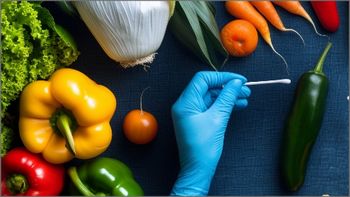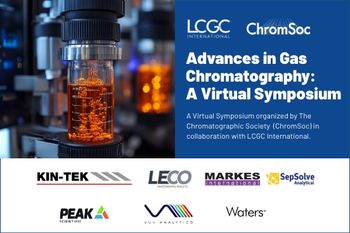
- February 2023
- Volume 41
- Issue 2
- Pages: 73
How Well Do You Pipette?
You probably think you know how to pipette correctly. But do you?
At the heart of most chromatographic analyses are the gravimetric and volumetric operations used to prepare samples, standards, and high-performance liquid chromatography (HPLC) mobile phases. Most of us believe we are proficient in these basic laboratory skills, but from time to time, I like to revisit the skills, theory, and regulatory recommendations for even for the most basic operations. So, let’s take a little deeper dive into the requirements for the use of so called “automatic” pipettes.
Let’s start with choosing the correct pipette for the job and compare and contrast the differences. In short, an air displacement pipette has a layer of air between the head of the piston and the liquid within the pipette tip. Air pressure is used to force liquid from the tip. Positive displacement pipettes have an integral piston within the disposable tip and the piston is in contact with the liquid being dispensed.
The manufacturers recommendations align well when considering which type of pipette to use for which sample type. Use air displacement pipettes for aqueous solutions and biological samples, and positive displacement pipettes for relatively volatile organic solvents, viscous solutions, and corrosive acids or bases (I wonder if, like me, you had been using an air displacement pipette for relatively volatile organic solvents or viscous solutions for years).
One pipette tip installation for air displacement pipettes: When installing a tip onto a air displacement pipette, rather than pressing the pipette shaft firmly and directly down onto the tip (apparently known as “hammering”), it is recommended that a slight twisting motion is used to create a good seal. Tips in racks are convenient (if more costly) for good practice in pipette tip fitting. For positive displacement pipettes, the above guidance should be followed, but once the tip is installed onto the shaft, the tip should be lifted out of the rack and the piston lowered until a “click” is heard as the piston locks into the pipette body. The plunger should then be pressed to the first stop position.
When using a variable volume pipette, some manufacturers recommend the volume is dialed using a clockwise motion as the dispensed volume is controlled by a piston spring. For maximum accuracy, the spring should always be set under tension by turning the thumbscrew clockwise. Operationally, when reducing the volume, slowly move the volume setting dial to the required volume, but when increasing the volume, overshoot the required setting by 1/3 of a turn and then reduce the volume to the desired setting. In this way, the desired volume is always reached using a clockwise motion and the piston spring remains under tension. Always hold the volume setting at eye level to avoid parallax error.
Holding the pipette vertically, smoothly depress the plunger to the first stop position, immerse the tip of the pipette into the liquid to be aspirated, and aspirate the liquid by smoothly and steadily raising the plunger to the rest position. If the tip is immersed too deeply, the increased hydrostatic pressure may cause too much liquid to be aspirated or liquid droplets to adhere to the outside of the pipette tip which may be transferred to the receiving vessel. If the tip is not immersed deeply enough, then vortexing may occur, or the liquid level may fall below the tip before reaching the top of the filling stroke, and too little liquid will be aspirated.
Wait two seconds for the aspirated liquid to move up into the tip and to equilibrate the temperature and pressure of the headspace air above the liquid. This step is particularly important in air displacement pipettes because of the changing compressibility of the headspace air above the aspirated liquid because of temperature and vapor pressure changes.
This first aliquot should then be discarded to waste, or if the liquid is to be retained, returned to the original container. Note that any contaminants present on the inside surface of the pipette tip may also be returned to the sample or reagent.
This tip-wetting step can significantly reduce the error associated with pipetting, and acts to reduce any interfacial effects between the liquid being aspirated and the inside surface of the pipette tip. With certain liquid types, or during pipette calibration or testing, some manufacturers and standards bodies call for up to five pre-equilibration and wetting step repeats prior to the first 'real' aspiration into a new tip or when volume changes are made to adjustable pipettes.
Place the upright pipette tip gently against the wall of the receiving vessel, held at an angle of between 10 and 45 o. Smoothly depress the plunger to the first stop and to the second stop after a slight pause. Slowly draw the pipette tip 8–10 mm up or along the vessel wall prior to removal from the vessel and then slowly allow the plunger to return to the rest position and discard the pipette tip. Draw the pipette tip 8–10 mm along the vessel wall prior to removal.
To quote Henry Ford, "Anyone who stops learning is old, whether at twenty or eighty. Anyone who keeps learning, stays young." I feel the flush of my youth after this salutary learning experience!
Articles in this issue
Newsletter
Join the global community of analytical scientists who trust LCGC for insights on the latest techniques, trends, and expert solutions in chromatography.





